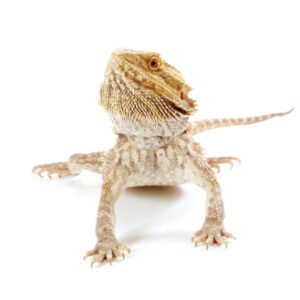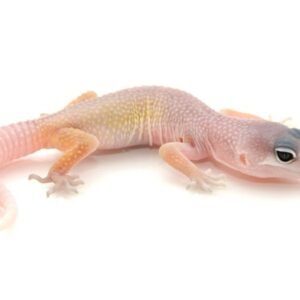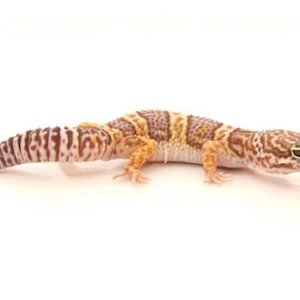Introduction to Tangerine Leopard Geckos
The Tangerine Leopard Gecko is a captivating morph of the well-known leopard gecko species, recognized for its distinctive and vibrant orange coloration. This particular morph exhibits a range of shades, from soft pastel oranges to deeper, more saturated hues, making it a highly sought-after choice for reptile enthusiasts and collectors. Unlike standard leopard geckos, which sport a pattern of yellow and black, the tangerine variant often showcases subtle patterns that can add to its appeal. The size of these geckos typically ranges from 7 to 10 inches, which contributes to their manageable size as pets.
Natively, leopard geckos are found across various regions in the Middle East, particularly in the arid landscapes of Afghanistan, Pakistan, and India. In their natural habitat, they thrive in dry, rocky environments, which influence their behavior and lifestyle. Tangerine Leopard Geckos exhibit unique behavioral traits that make them stand out; they are known for their gentle temperament and can become quite sociable with regular handling. These characteristics make them particularly suitable as beginner pets for reptile enthusiasts.
The history of leopard geckos as pets dates back to the mid-20th century, yet the tangerine morph saw a surge in popularity during the 1990s due to successful breeding programs that enhanced their striking coloration. As captive breeding practices evolved, breeders began to focus on selectively producing individuals exhibiting the most vibrant colors, which further solidified the tangerine variant’s standing in the reptile community. The combination of their stunning appearance and amiable nature renders Tangerine Leopard Geckos not only an attractive aesthetic option but also an engaging companion for reptile lovers.
Caring for Your Tangerine Leopard Gecko
Providing adequate care for your Tangerine Leopard Gecko is crucial for its health and well-being. Understanding habitat setup, dietary needs, and health considerations will enhance your gecko’s quality of life and longevity. To begin with, the ideal tank size for a single gecko starts at a minimum of 20 gallons. It is essential to choose a tank that allows for both horizontal and vertical movement, as these reptiles enjoy climbing and exploring their surroundings.
When it comes to substrate options, select materials that are safe and easy to clean. Common choices include reptile carpet, paper towels, or tiles, as they reduce the risk of impaction from ingesting sand or loose materials. Creating a suitable habitat also involves ensuring the right heating and lighting. Tangerine Leopard Geckos require a temperature gradient within their tank, ideally between 75°F to 85°F on the cool side and 90°F to 95°F on the warm side. A basking spot under a heat lamp or heat mat is essential, while a light cycle that simulates day and night is necessary to mimic their natural environment.
In terms of dietary requirements, Tangerine Leopard Geckos are insectivores and thrive on a diet of live insects such as crickets, mealworms, and dubia roaches. It is vital to gut-load these insects with nutritious foods before offering them to your gecko. Additionally, providing a calcium supplement and, occasionally, a multivitamin ensures your gecko receives essential nutrients. Feeding frequency can vary depending on the age and size of the gecko; juveniles typically need to be fed daily, while adults may be fed every other day.
Health considerations also play a crucial role in gecko care. Be aware of common issues such as metabolic bone disease and dehydration. Regularly monitor your gecko’s behavior, weight, and shedding pattern to track its health status. Maintaining an appropriate temperature, a balanced diet, and a clean habitat will significantly contribute to your Tangerine Leopard Gecko’s happiness and longevity.





